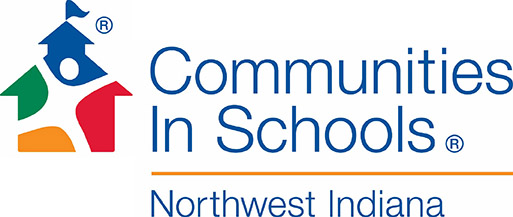Policy Corner
At Communities In Schools, we support students in ways that go beyond the classroom, helping them stay focused on graduating today, so they can go further tomorrow. We participate in policy discussions to ensure that lawmakers prioritize strategies, like integrated student supports, that empower young people to achieve in school and in life.
Policy makers want to hear from their constituents about what matters to their communities. Use the simple, secure form on this page to go #AllinforKids and take action to support our federal policy priorities.
Rethinking School Discipline
Supporting Data
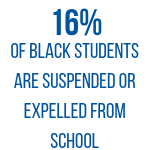
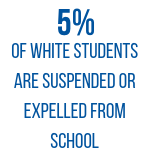
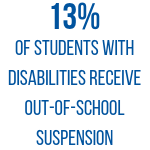

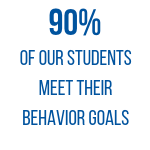
Sources:
1U.S. Department of Education Office for Civil Rights, 2014 Civil Rights Data Collection: Data Snapshot (School Discipline)
2 The Aspen Institute, National Commission on Social, Emotional and Academic Development, Caring Communities: Linking School Culture and Student Development
3 Communities In Schools, 2018 Community Matters Report
Policy Brief
Preparing Students for College, Career, and Civic Engagement
Supporting Data


Sources:
1 The Education Trust, 2016 Meandering Toward Graduation: Transcript Outcomes of High School Graduates
2 Communities In Schools, Gallup Poll College and Career
Research Brief
Preparing Students for
Reducing Chronic Absenteeism
Supporting Data
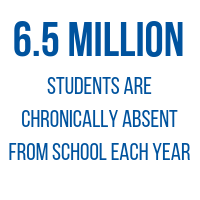

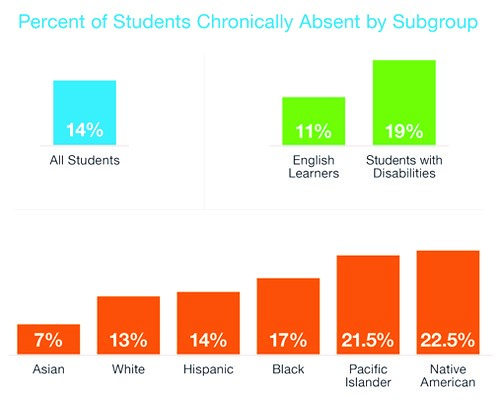
Sources:
Data Stat 1 U.S. Department of Education, Chronic Absenteeism in the Nation’s Schools
Data Stat 2 Communities In Schools, 2018 Community Matters Report
Chart 3 U.S. Department of Education, Chronic Absenteeism in the Nation’s Schools
Policy Brief
Research Brief
Investing in the Success of our Students
21st Century Community Learning Centers (21st CCLC) grants support local school and community-based providers of afterschool and summer learning programs. This investment brings quality enrichment activities, like tutoring, STEM exploration and field trips, to more than 1.7 million children who attend resource-strapped schools in high-need communities that may not be able to provide these programs without this support.
Communities In Schools leverages 21st CCLC to provide afterschool and enrichment activities in schools nationwide, and many of the partners we collaborate with to align supports also rely on this funding. Eliminating 21st CCLC would make it more difficult for the at-risk students most in need of these services to access them.
Source:
2017 Communities In Schools and 21st Century Community Learning Centers: Supporting At-Risk Youth with Quality Enrichment
Cooperation for National and Community Service
The Corporation for National and Community Service (CNCS) is a federal agency that helps millions of Americans improve the lives of their fellow citizens through volunteer service. CNCS works with local partners, like Communities In Schools, on a wide range of education and development projects, helping local communities tackle some of the most difficult challenges.
By enlisting millions of volunteers, these programs ensure the presence of caring adults in schools nationwide. In school-year 2015-16, AmeriCorps volunteers provided over 500,000 hours of service to Communities In Schools, working directly with students as mentors and tutors.
Source:
2017 Communities In Schools and National Service: Changing Lives through Relationships
Title IV Part A: Student Support And Academic Research Grants
Student Support and Academic Enrichment (SSAE) grants provide flexibility for school districts to make investments in initiatives that reflect the needs of their students. This new block grant, created by the Every Student Succeeds Act (ESSA), will empower districts to make meaningful, strategic decisions about which schools have the greatest need or have been identified for improvement. Funds can be used by schools in three broad areas: 1) Providing students with a well-rounded education; 2) Supporting safe and healthy students; and 3) Supporting the effective use of technology.
Source:
Communities In Schools, Student Support and Academic Enrichment Grants
Join Our Movement! We owe it to our young people to demonstrate that we are all in this together for their future success. Fill out the form below and join our movement today!

Tel: 219-378-9114
Fax: 219-398-9118




